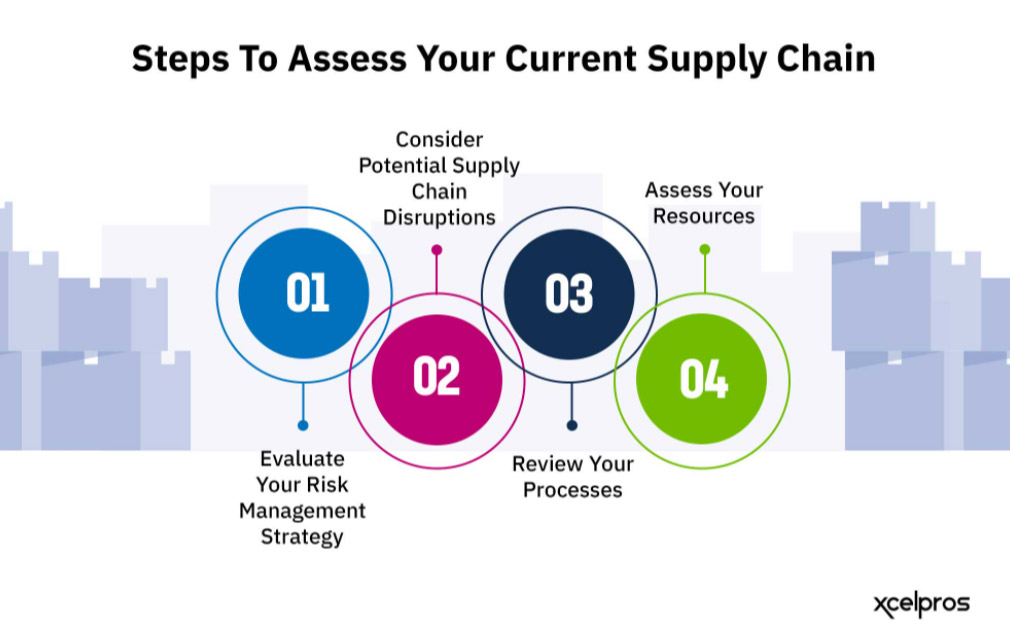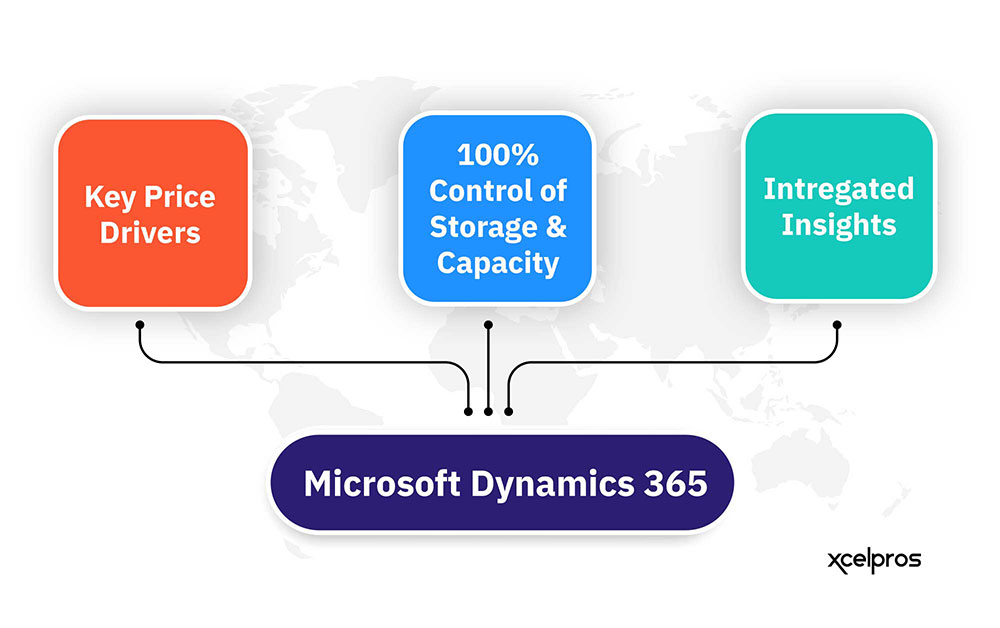Efficient production floor management is an increasingly important part of any manufacturing operation. To keep production running smoothly, businesses need systems to track upcoming jobs and manage resources effectively. This is still a combination of legacy systems and manual processes for many businesses.
New products like Microsoft Dynamics 365 give businesses a comprehensive way to manage and automate their production floor operations, track jobs, and manage resources in one integrated system. This blog explores Microsoft Dynamics 365 and how it helps streamline production floor management.
Overview of production floor management
Production floor management is one of the most important parts of any manufacturing business. Production floor managers are responsible for day-to-day operations, scheduling, staffing, monitoring and control, quality assurance, and more.
Figure 1:Elements of Effective Production Floor Management

Efficient Production Floor Management includes things like:
- Scheduling: Planning and scheduling of activities and personnel on the production floor.
- Staffing: Hiring, assigning, and managing personnel on the production floor.
- Monitoring & Control: Ensuring that operations run smoothly and according to plan.
- Quality Assurance: Assessing the quality of the products being produced.
- Inventory Management: Keeping track of the inventory on the production floor.
- Reporting & Analytics: Analyzing data from the production process to identify areas for improvement.
Production floor management involves communication between departments and being able to monitor and update existing workflows to ensure production is running smoothly and efficiently and that tasks are completed on time. Production managers spend a lot of valuable time ensuring compliance with industry standards and government regulations, all of which can positively impact a company’s bottom line.
These power users need a production floor management system that provides transparency into the entire production process and lets them monitor progress and make necessary adjustments. The right solution can help improve customer service and reduce overhead costs associated with production.
Production floor management tools make it easier for businesses to manage their production processes more effectively and efficiently. This system needs to provide real-time information about the status of each job or resource being managed. This helps organizations stay informed about their operations and decide how best to move forward.
Managing Production in Microsoft Dynamics 365
Microsoft’s Dynamics 365 products include comprehensive enterprise resource planning (ERP) solutions that offer businesses a straightforward way to manage their production floor operations, resources, and more. Microsoft has spent years developing these products to help streamline and automate processes to improve efficiency.
Production floor management in Microsoft Dynamics 365 is easy to learn, simple to use and much more efficient than older, manual systems. Microsoft’s investments include millions of dollars to ensure their products are perfect for optimizing the flow of resources, reducing errors, and improving the overall efficiency of production processes.
The Production Floor Management module within Microsoft Dynamics 365 allows you to schedule and track jobs, manage resources, and gain insight into current and future production activities with a full range of tools and features to help you better manage your operations.
The Production Floor Management module allows you to easily create and monitor job tickets that list all the resources required for each production activity so you can assign tasks to specific resources, schedule jobs and check progress in real time.
This module also provides valuable insights on resource utilization, production efficiency, and capacity utilization. This helps you to optimize your production line, reduce wastage, and maximize profits.
On top of that, the Production Floor Management module gives you the ability to create custom workspaces for different types of users. These custom workspaces let you streamline complex production processes and provide an improved view of data.
Overall, Microsoft Dynamics 365 offers a comprehensive solution for managing your production floor operations. With its advanced features and tools, it helps streamline your operations and ensure efficient production.
Production floor management and Microsoft Dynamics 365
One of the most important benefits of production floor management in Microsoft Dynamics 365 is improving efficiency. With a single source of information, organizations can access accurate data from any location, helping to make decisions faster. Organizations can also access data in real-time to stay ahead of changes in the market.
By centralizing information and automating manual tasks, production floor management in D365 helps organizations increase productivity, reduce operational costs, and free up resources for more strategic projects. With better insights into operations, companies can make more informed decisions, often leading to significant cost savings.
Managing upcoming jobs
Production floors can be hectic, with countless tasks and jobs to juggle. Microsoft Dynamics 365 is designed to help production managers stay on top of their workload by providing a comprehensive view of upcoming jobs and the resources required to complete them.
D365 allows users to create job tickets for each new task quickly. These tickets provide detailed information about the job, including resources needed, estimated duration, and other relevant details. This information is used to create a timeline of upcoming jobs, giving managers a quick view of how their resources are utilized and when projects must be completed.
Users can assign tasks and resources to workers, allowing greater control over who is responsible for completing each job. This ensures that production floor operations are more efficient and reduces the chances of costly errors due to miscommunication. Additionally, job tickets can be customized with additional fields like a priority and special instructions, allowing managers to adjust workflow based on current needs.
With an intuitive user interface and powerful job-tracking capabilities, D365 makes it easy for production managers to keep track of their upcoming jobs and ensure they have the right people and resources to get the job done.
Managing resources
The ability to manage resources efficiently is key to successful production floor management. Microsoft Dynamics 365 offers many features and capabilities to help manage your resources.
D365 provides advanced tools for forecasting resource requirements that let you plan the resources needed for upcoming jobs and adjust staffing levels accordingly. This helps maximize resource utilization by scheduling jobs to ensure that resources are used as efficiently as possible.
You can monitor resource performance in real-time using dashboards and analytics to identify areas where performance needs to be improved quickly or resources need to be redistributed. D365’s resource management tools make it easy to ensure that your production floor is running smoothly and efficiently.
D365 allows you to track resource availability, check inventory levels, and schedule preventative maintenance to ensure that all necessary resources are in place when they’re needed and eliminates potential downtime due to maintenance issues. You also get the ability to control access rights, allowing you to control who has access to which resources and ensuring that only authorized personnel can access sensitive data.
Custom Workspaces
With custom workspaces, production managers can streamline their operations and stay organized. Custom workspaces in D365 can be set up in various ways to suit the production manager’s unique needs. For example, custom workspaces can include a dashboard that overviews current jobs, upcoming tasks, and other essential information. They can also display detailed data on different resources like employees, materials, and machines.
By creating workspaces tailored to their individual needs, production managers can easily keep track of their resources and jobs, enabling them to produce better results and increase efficiency. Furthermore, custom workspaces also provide a way to generate reports quickly and accurately so that production teams can make better decisions with greater confidence.
Custom workspaces in Microsoft Dynamics 365 allow users to monitor real-time performance and adjust as needed. This allows production managers to quickly identify any problems or issues and take corrective action before they become too serious. As a result, overall production performance is improved significantly.
Final Thoughts
Production floor management can be difficult and complex, especially for large-scale operations. Microsoft Dynamics 365 offers an effective solution to streamline this process and make it easier to manage jobs and resources.
Its intuitive user interface and powerful customization capabilities make it well-suited for managing all sizes and complexities of production floors. Production floor managers can easily keep track of upcoming jobs and resources and quickly adjust plans in response to changes in demand or capacity with a complete overview of the operations.
Features like custom workspaces provide the flexibility to customize the system according to the business’s specific needs. Microsoft Dynamics 365 helps production floor managers stay organized, maximize efficiency, and achieve better results. Contact us for more information.






















